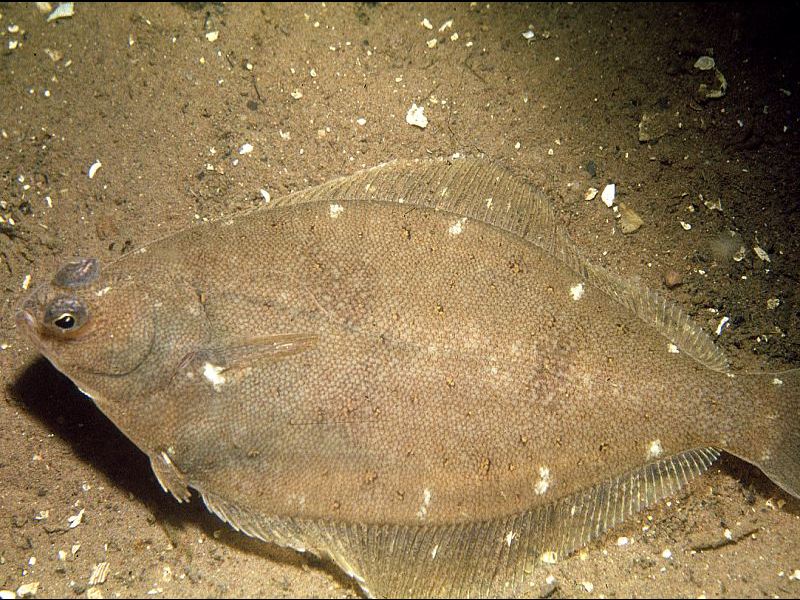| PISCES : Pleuronectiformes : Pleuronectidae | BONY FISH |
Limanda limanda (Linnaeus, 1758)
Dab
 |
| Limanda limanda |
Description: The dab is similar in shape to the plaice and flounder and also has both eyes on the right-hand side of the body. The upper surface is usually pale brown in colour with scattered darker blotches and speckles, however the pectoral fins may be orange. The most distinctive characteristic of the dab is the lateral line which has a strong semi-circular curve above the pectoral fin. This species rarely grows to over 40cm long and most individuals are less than 30cm.
Habitat: The dab lives mainly on sandy seabeds and is usually encountered at depths between 20-40m. It feeds on brittlestars, small sea-urchins, hermit-crabs, amphipods, worms, molluscs and sand-eels.
Distribution: Common all around the coasts of Britain and Ireland, particularly in the North Sea.
Similar Species: The dab is similar in overall appearance to the plaice and flounder but can be distinguished by the characteristic shape of the lateral line.
Key Identification Features:
- Lateral line with semi-circualr curve above pectoral fin
- Pectoral fin may be orange
Distribution Map from NBN: Limanda limanda at National Biodiversity Network mapping facility, data for UK.
iNaturalist: Limanda limanda at iNaturalist World Species Observations database.
GBIF data for Limanda limanda
WoRMS: Limanda limanda at World Register of Marine Species. Accepted name: Limanda limanda (Linnaeus, 1758). AphiaID: 127139.
Classification: Biota; Animalia; Chordata; Vertebrata; Gnathostomata; Osteichthyes; Actinopterygii; Actinopteri; Teleostei; Pleuronectiformes; Pleuronectidae; Pleuronectinae; Limanda
| Previous species | Next species |
| Picton, B.E. & Morrow, C.C. (2024). Limanda limanda. (Linnaeus, 1758). [In] Encyclopedia of Marine Life of Britain and Ireland. https://www2.habitas.org.uk/marbiop-ni/speciesaccounts.php?item=ZG8910. Accessed on 2025-04-19 |